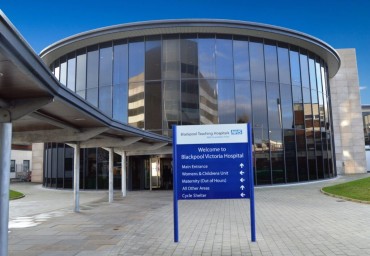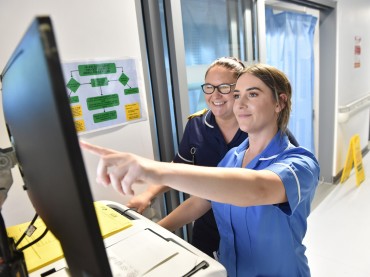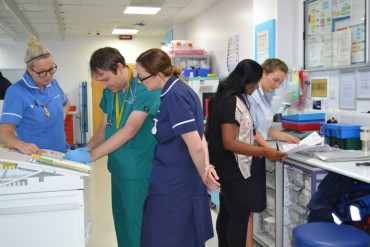What is ECMO and why is this treatment being considered?
ECMO is an abbreviation for Extra-Corporeal Membrane Oxygenation.
Our bodies need oxygen to survive. Lungs that are functioning normally enable oxygen to pass from the air we breathe into the bloodstream. Our bodies then use this oxygen and produce a waste gas called carbon dioxide. The lungs get rid of carbon dioxide when we breathe out.
If lungs are damaged and they are unable to pass enough oxygen into the blood and remove enough carbon dioxide, or if the patient has experienced difficulties with their heart during cardiac surgery, ECMO may be considered. ECMO supports the patient’s heart and lungs and allows them to rest whilst still providing oxygen to the other organs of the body.
It is very similar to the heart-lung machine that is used for patients having an operation on their heart. The amount of time a patient requires ECMO varies but can extend from days to weeks.
• Patients are kept asleep on the Intensive Care Unit during ECMO therapy.
• ECMO can look very frightening. We will ensure family will always be kept fully informed, with regular updates relating to any progress and explanations of care given and available options.
• Whilst the patient is on ECMO, the doctors will constantly review the patient’s condition, deciding on appropriate treatment plans and management.
How does ECMO work?
ECMO is a therapy which supplies oxygen to the blood from outside the body. During ECMO, blood is removed from the venous circulation through special tubes called cannulae.
During heart surgery, surgeons insert the cannulae into large veins and arteries in the chest and sometimes in the groin. The ECMO machine pumps the patient’s blood from a large vein through an artificial lung outside the body. This artificial lung adds oxygen to the blood and removes carbon dioxide. The patient’s blood is then returned to their body into a large artery.
Supporting the heart and lungs gives them a chance to heal, stabilise and recover. By providing optimum oxygen levels in the blood and removing carbon dioxide, ECMO allows adequate oxygenation of the other major organs of the body.
While ECMO is in progress, patients stay attached to the ventilator and are kept sedated in the ICU. A Consultant Cardiac Surgeon and Consultant Anaesthetist are involved in the patient’s care. ECMO machines are maintained by a group of staff called Perfusionists. Patients are also cared for by two nurses. All other supportive treatments will continue on ICU while patients are on ECMO.
What are the risks of ECMO?
Bleeding Whilst ECMO can aid recovery, it is not without a risk of complications. The main risk during ECMO is bleeding. Bleeding occurs due to a blood thinning drug called heparin, which must be given during ECMO. Heparin prevents the blood from clotting in the ECMO machine.
Clotting in the ECMO machine would stop the ECMO from working. To reduce the risk of serious bleeding problems, the amount of heparin required is closely monitored at all times. Some bleeding is common and, although this may look distressing, it is usually not of major concern and is managed by the clinical staff looking after the patient by giving donor blood and blood clotting products.
Infection Although strict infection control measures are in place, the development of infection still remains a risk whilst on ECMO because of the large cannulae inserted through the skin. The patient is monitored continuously for any signs of infection and will be treated with antibiotics if appropriate.
Visiting within the ICU
We have an open visiting policy for next of kin. Potential onsite accommodation is arranged on a case-by-case basis depending on individual circumstances so please speak to the nursing staff.



